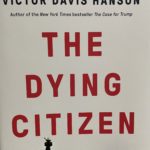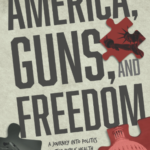Paul Kengor on Why We Should Study Ronald Reagan
Although it may be considered quaint to recall the Reagan years during the Obama era, particularly in academic circles, a case could be made for doing so. “And though Barack Obama won two terms, he was the first president in history to be reelected with fewer popular and Electoral College votes than he received in 2008,” Paul Kengor points out in his book, 11 Principles of a Reagan Conservative. “Obama won a bare majority of states in 2012—only twenty-six of them.”
Kengor is an historian at Grove City College. One thing that Reagan did as president, Kengor reminds us, was to tell the United Nations that the free market works, a task apparently so arduous that none of the four presidents who succeeded him, Republican or Democrat, attempted it.
Also, in speeches as president, Reagan quoted the Founding Fathers a record 850 times. “President George H. W. Bush cited the Founders roughly sixty times, and no president cited them as infrequently as Jimmy Carter and Gerald Ford, with Carter in the range of thirty-some citations and Ford with merely a handful,” Kengor notes. “The sparseness of the Carter and Ford citations is especially odd given that their times in office occurred around America’s bicentennial.”
Yet, arguably, the above are matters of style. Even Reagan’s detractors gave him some credit on that score. Nevertheless, on comparisons of day-to-day life with his successors, and even his predecessors, President Reagan also comes out looking good.
“Contrary to liberal demonology, women and blacks and other minorities did extremely well during the Reagan years,” Kengor writes. “Real income for a median black family had dropped 11 percent from 1977 through 1982; from 1982 through 1989, coming out of the recession, it rose by 17 percent.”
“In the 1980s, there was a 40 percent jump in the number of black households earning $50,000 or more. Black unemployment (which has increased significantly under President Barack Obama) actually fell faster than white unemployment in the 1980s. The number of black-owned businesses increased by almost 40 percent, while the number of blacks who enrolled in college increased by almost 30 percent (white college enrollment increased by only 6 percent).”
“There were likewise impressive numbers for Hispanics, who saw similar (if not higher) increases in family income, employment, and college enrollment. Among these, the number of Hispanic-owned businesses in the 1980s grew by an astounding 81 percent, and the number of Hispanics enrolled in college jumped 45 percent.”
This book review was published previously in March 2014.




